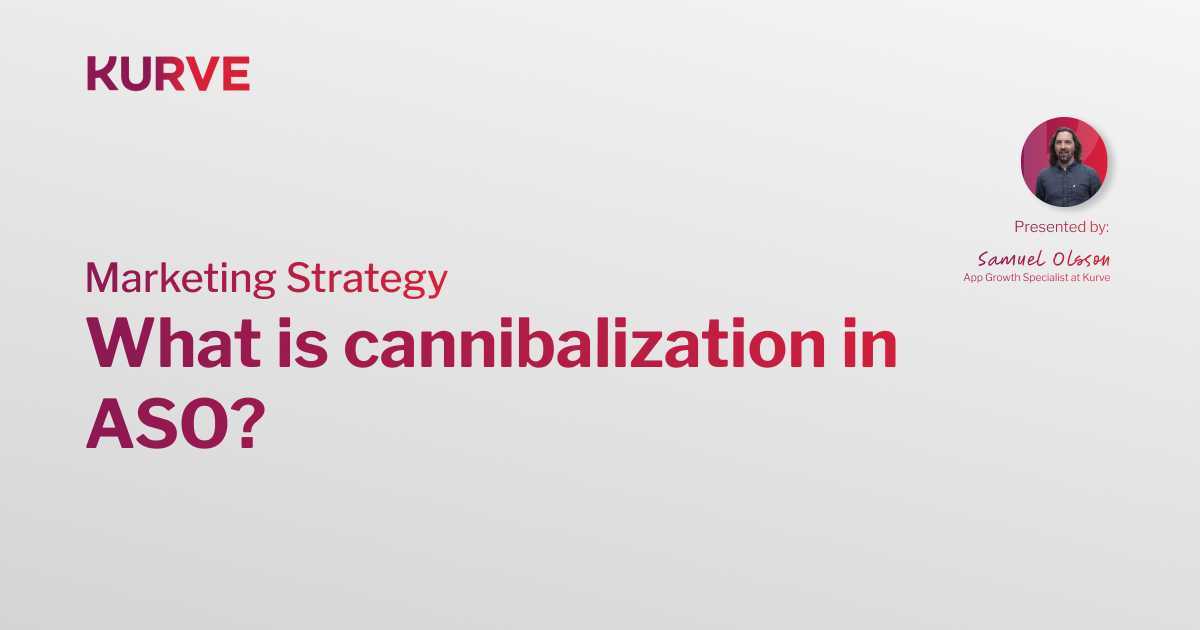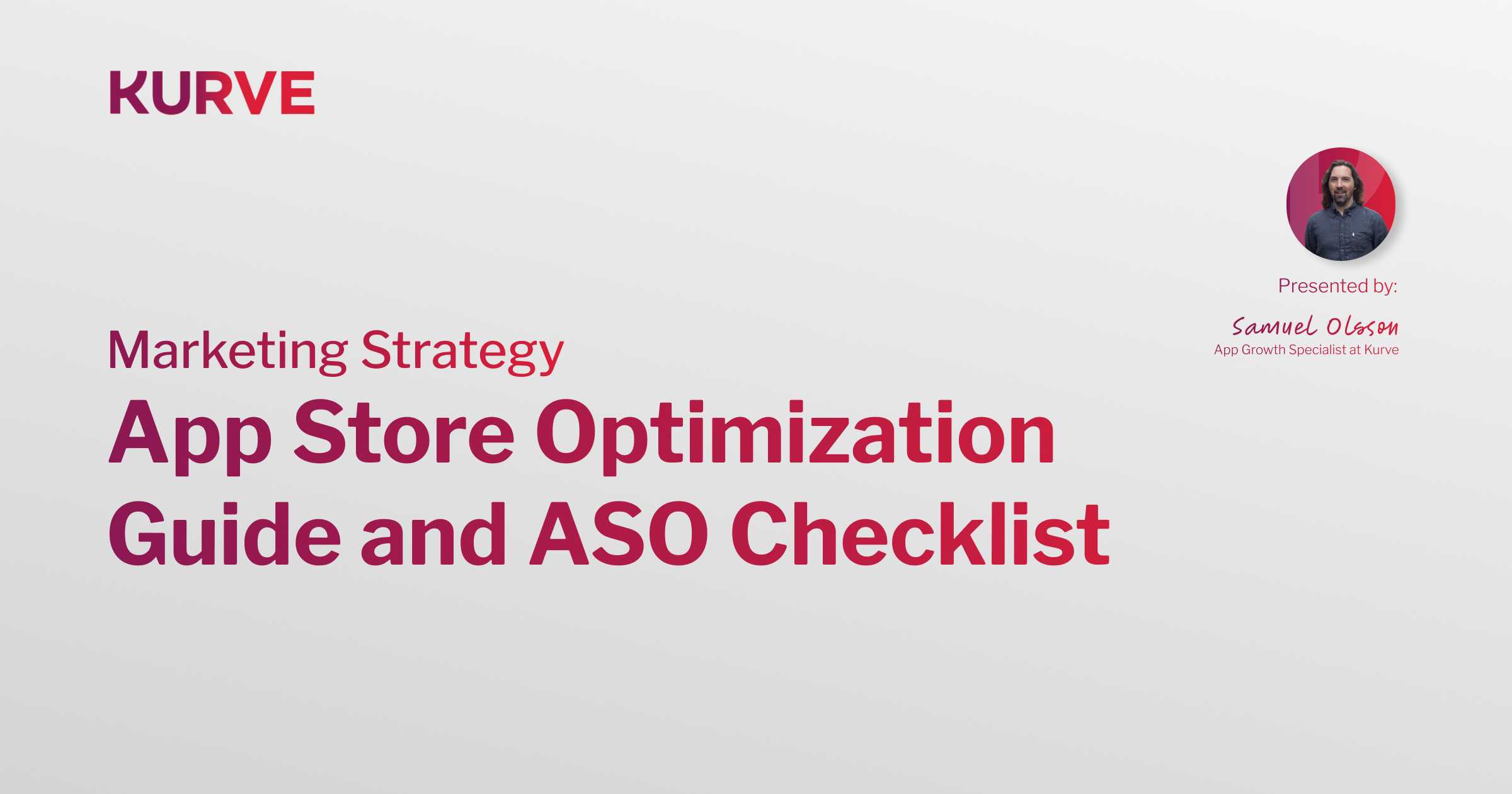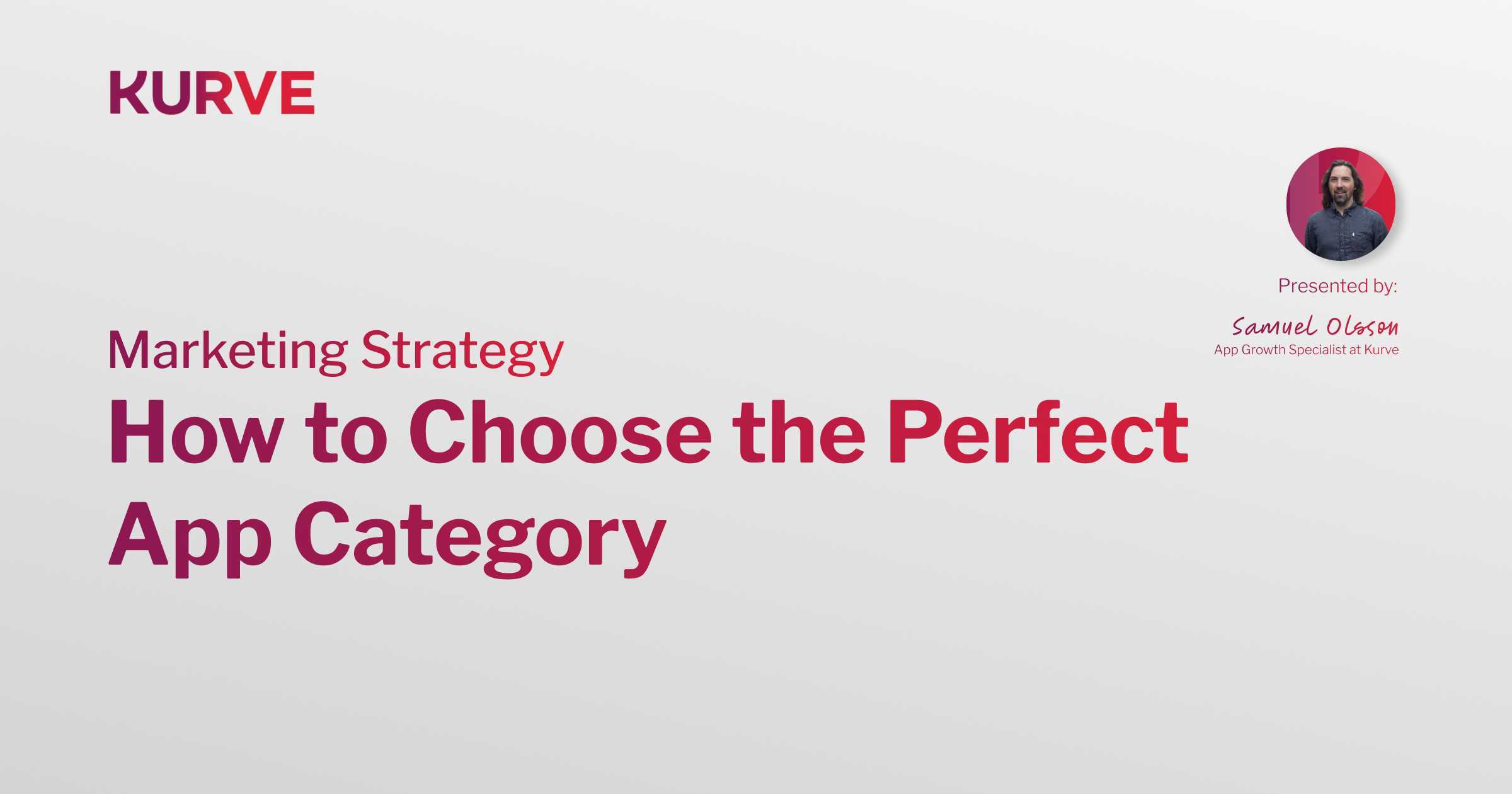The Ultimate Guide to App Store Optimization Best Practices 2023
Did you know there are over 8 million apps in the world? On the Apple App Store alone, there are over 1.76 million, all jostling for attention. The odds of getting lost in the app marketplace couldn’t be higher.
But don't write off your chances just yet.
With App Store Optimization (ASO), you’ve found your ticket to rising above the noise.
It's a vital cog in the app marketing machine but can feel as intricate as a Rubik's cube. That's why even successful brands like Sweatcoin entrust agencies like Kurve to handle this work.
Our Sweatcoin case study showcases how we helped them become the fastest-growing health and fitness app in history.
We've got your back too. This guide will demystify ASO for you, outlining the best practices for 2023.
What is App Store Optimization?
App Store Optimization (ASO) might sound like tech jargon. But think of it like gardening - nurturing and pruning your app until it blossoms in the App Store.
At its core, ASO enhances an app's visibility within app stores such as Google Play or the Apple App Store. The goal? To boost the app's ranking in search results, making it easier for potential users to discover your app amidst the digital flurry.
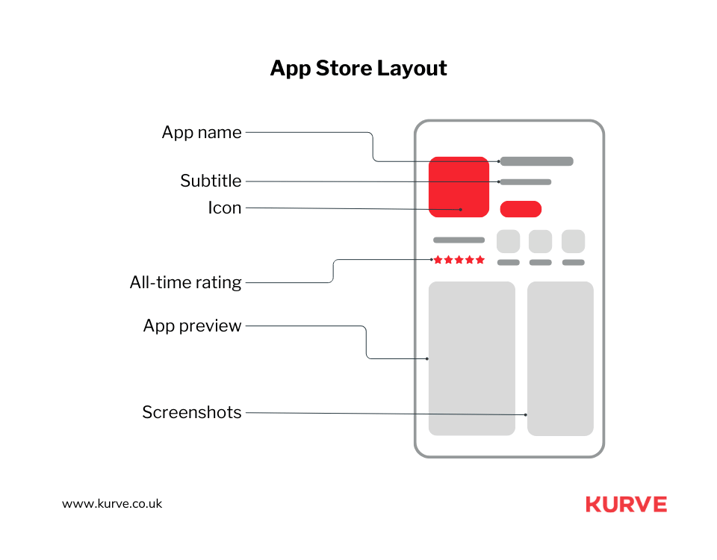
For instance, imagine you've developed a fitness app. You'd want it to pop up when folks search "workout app," right? That's where ASO steps in. It's a strategic blend of keyword optimization, user experience design, and continuous testing to ensure your app isn't just another face in the crowd. It's the stepping stone for your app to top the charts and win downloads.
Why is App Store Optimization Important?
When you're one in a crowd of millions of apps, standing out is a daunting task. Think of it as a talent show; you've got to dazzle the audience (in this case, potential users) amidst a sea of equally talented performers. That's where App Store Optimization (ASO) struts into the spotlight.
ASO is the secret ingredient that gets your app noticed. It works its magic to ensure your app isn't a needle in the haystack but a shining beacon, easy to spot by those seeking your services. The upshot? Increased app visibility leads to a substantial uptick in app downloads - it's simple math.
Don't just take our word for it. Look at Canon's BackThen app. With Kurve's tailored ASO strategy, the app gained greater visibility, attracting more downloads and engagement. Check out our BackThen case study for a closer look at how ASO helped transform the app's fortunes.
App Store Differences
Despite their shared purpose of hosting and distributing mobile applications, Google's Play Store and Apple's App Store possess distinctive characteristics. While they're identical twins in terms of being the go-to platforms for developers to distribute their apps and for users to discover them, they differ in more ways than one.
Let's unpack these differences.
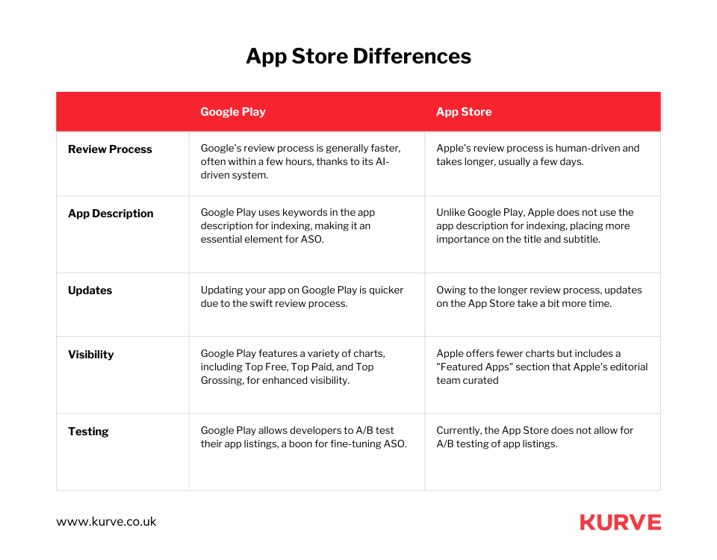
Google Play Store
- Review Process: Google's review process is generally faster, often within a few hours, thanks to its AI-driven system.
- App Description: Google Play uses keywords in the app description for indexing, making it an essential element for ASO.
- Updates: Updating your app on Google Play is quicker due to the swift review process.
- Visibility: Google Play features a variety of charts, including Top Free, Top Paid, and Top Grossing, for enhanced visibility.
- Testing: Google Play allows developers to A/B test their app listings, a boon for fine-tuning ASO.
Apple App Store
- Review Process: Apple's review process is human-driven and takes longer, usually a few days.
- App Description: Unlike Google Play, Apple does not use the app description for indexing, placing more importance on the title and subtitle.
- Updates: Owing to the longer review process, updates on the App Store take a bit more time.
- Visibility: Apple offers fewer charts but includes a "Featured Apps" section that Apple's editorial team curated.
- Testing: Currently, the App Store does not allow for A/B testing of app listings.
Despite their differences, the two platforms share the same goal: to offer the best user experience. To achieve this, both emphasize the quality of apps, offering design, functionality, and content guidelines.
Understanding these differences and similarities can help you craft an effective ASO strategy tailored to each store.
App Store Optimization Best Practices
Mastering App Store Optimization isn't about cracking a secret code. It's about staying committed to the best practices that help you effectively connect with your audience. In the ever-evolving realm of ASO, you need a firm grasp of the key steps and a willingness to learn, experiment, and adapt continuously.
So, whether you're a small startup or an established brand, the following practices can serve as your north star in the vast ocean of ASO. From understanding your audience to regular evaluation, these steps ensure that your ASO strategy is comprehensive, practical, and up-to-date.
As we dive deeper, you'll find that each aspect is critical to the giant ASO puzzle. Now, let's go ahead and unlock each piece.
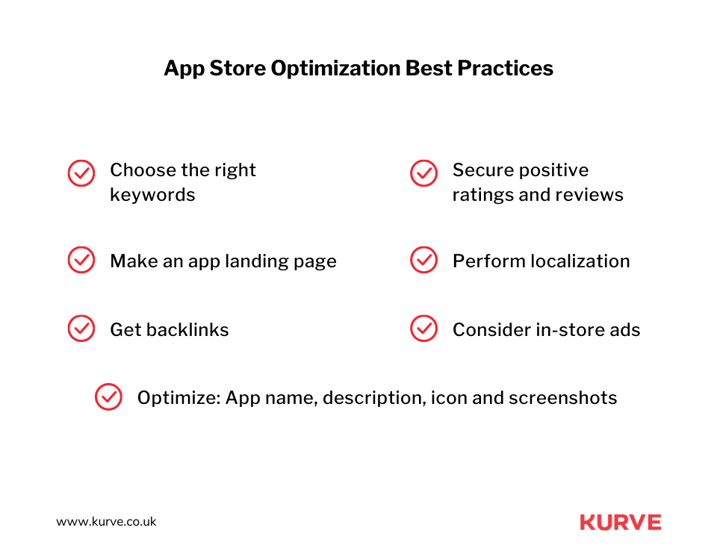
Research your Target Audience
Have you ever tried shooting a dart blindfolded? Tough, right? That's what marketing without understanding your target audience is like. So, let's remove that blindfold, shall we?
First things first, we need to know who they are. Are your users teenagers addicted to adrenaline-fueled games or busy professionals seeking productivity tools? Uncovering these details is the cornerstone of your ASO journey.
Next, dig deeper. Understand their needs, preferences, and pain points. What makes them tick, and what makes them click that 'Install' button? User surveys can be a goldmine of information here. It's like having a direct conversation with your users.
But where to get all this data, you ask? Good news - you've got an array of tools at your disposal. The tip of the iceberg is Google Analytics, social media insights, and user interviews. Remember, the more you understand your audience, the better your chances to win at the ASO game.
Check for Market Trends
The app market is as dynamic as a high-speed rollercoaster. It's constantly changing, and it is essential to stay on top of these changes.
Start by keeping a close eye on the top charts. What are the trending apps in your category? What unique strategies are they employing? Monitoring app store rankings on platforms like App Annie and Sensor Tower can be handy.
Spotting trends, however, is only half the battle. The real challenge lies in understanding why these apps are successful. Is it a unique feature or a trend that they've capitalized on?
Finally, remember to keep your ASO efforts flexible. What works today might not work tomorrow. ASO is not a one-time task but a dynamic process that needs to adapt to the ever-changing app landscape. The key here is consistency. Continuously track, analyze, and tweak your strategy for the best results.
Use Relevant Keywords
Using relevant keywords is like paving a clear path for your audience to reach your app. It begins with keyword research, identifying the terms your target audience uses to find similar apps.
Tools like AppTweak and Mobile Action can help unearth these keywords. Once you've got a list, it's time to work these magic words into your app title, description, and reviews.
However, remember that stuffing your content with keywords can be counterproductive. It's about finding the perfect balance. The focus should be on organizing these keywords into your content, ensuring it makes sense to the reader. It's like seasoning a dish - you want enough to enhance the flavor but not so much that it's overpowering.
Use Screenshots and Videos
Visuals are a vital component of your app's listing. Think of screenshots and videos as a trailer for your movie. They can instantly grab attention and give potential users a sneak peek into your app's world.
Use clear, high-resolution images displaying your app's key features for screenshots. Be bold in adding captions or annotations to drive home the message. Remember, every screenshot is a chance to sell your app.
Videos, on the other hand, can give users a real-life demonstration of your app. It's the perfect platform to highlight your app in action and showcase its user interface. Keep it short, engaging, and, most importantly, informative. Your goal should be to convince the viewer that your app is worth their time and phone space.
Optimize App Title and Description
Regarding ASO, your app title and description carry a lot of weight. The title should be unique, easy to read, and include a relevant keyword. Be mindful that the App Store and Google Play have character limits for the title (30 for App Store, 50 for Google Play).
Moving on to the app page and description, it must be informative and engaging. It should communicate what your app does, its main features, and what sets it apart. Like the title, it's also a great place to include relevant keywords. Remember to update your description regularly to highlight new features or updates.
Localize App Listing
Think global, act local. That's the philosophy behind localizing your app listing. If you're targeting users in different countries, you want to make your app feel homey to each of them. You translate your app's title, description, and keywords into the local language.
But localization isn't just about language. It's about culture, too. Understand local customs and tastes, and tweak your visuals or marketing message to suit them. This might take time and research, but the payoff can be huge.
It's your way of saying, "This app is made just for you," no matter where your users are.
Stand Out with a Compelling Icon
You've heard the phrase, "Don't judge a book by its cover," but let's be honest; everyone does, especially in the app world. Your app icon is the first visual connection users make with your app. It's the face of your app, and it needs to be enticing.
Start by exploring unique designs that embody your app's essence. Use contrasting colors and avoid text which might be hard to read on smaller devices. The goal is to create an easily recognizable icon in a crowded app store listing.
Conduct A/B testing to see which icon resonates best with your audience. Remember, a good icon is not just about being pretty; it's about communicating the core functionality of your app at a glance. This is one design element where creativity meets functionality, so make it count!
Encourage Customer Reviews
In the realm of ASO, customer reviews are pure gold. They provide social proof, a key driver of user behavior. In all honesty, most users will only leave a review if asked to. That's why it's essential to prompt users to leave a review at the right time.
One strategy is to ask for reviews when users are at a high point in their app experience, like after they've just completed a level in a game or finished a workout in a fitness app. You can also incentivize reviews and app ratings by offering app-specific rewards.
Equally important is handling negative reviews. Rather than ignoring them, treat them as an opportunity to engage. Show users that you value their feedback and are actively working to improve their experience.
Remember that more positive reviews and higher ratings will improve your app's ranking. It's a virtuous cycle. Better ranking leads to more visibility, which leads to more downloads, reviews, and so on. The effort to encourage and manage customer reviews is worth it!
Evaluate Regularly
While it's true that Rome wasn't built in a day, it's also true that it wasn't maintained in a day, either. Your app store optimization strategy is the same. You must remember it; it requires regular check-ups and tweaks.
Start by tracking your keywords. Have any of them dropped in rankings? Are new keywords on the rise that you should be targeting? These are questions you should be asking regularly.
Next, keep an eye on your competition. Are they gaining on you? What new strategies are they using? Remember, ASO is not a solo sport, and understanding what your competitors are doing can give you an edge.
Lastly, stay on top of new ASO practices and trends. What worked yesterday may not work tomorrow. Regular evaluation will ensure your app store page remains relevant and visible in an ever-changing landscape. As they say, the only constant is change!
Final Thoughts
We've walked through the often-intimidating terrain of App Store Optimization together. But don't worry if you still feel a little overwhelmed.
The path to app visibility and success isn't a sprint; it's a marathon that needs regular hydration with best practices and strategies.
The good news? We've armed you with a hefty set of ASO best practices for 2023. With them in your toolkit, you're well on your way to boosting your app's visibility and, in turn, your downloads.
Interested in learning more or need help with your ASO strategy? Feel free to contact us at Kurve on our contact page or get inspired by our case studies. After all, we do ASO and love helping brands shine brighter in the app marketplace.
